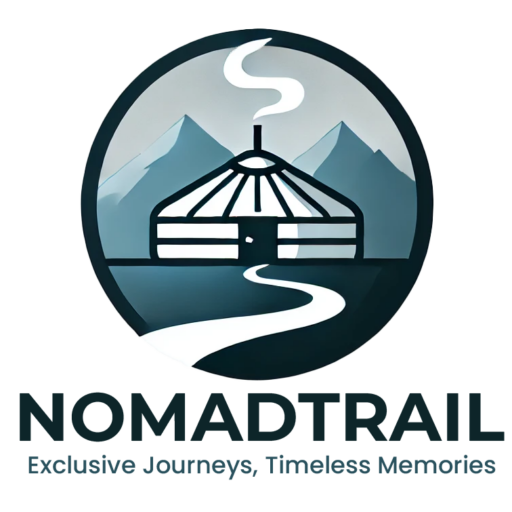Mongolia is one of the last places on Earth where traditional nomadic life still thrives. In the vast grasslands, desert steppes, and mountain valleys, families continue to live much as their ancestors did—moving with the seasons, raising livestock, and embracing a deep connection to the land.
If you’re curious about authentic Mongolian culture, getting to know its nomadic people is essential. Here’s a closer look at what makes nomadic life in Mongolia so unique—and why it’s one of the most enriching parts of traveling here.
Nomadic Mongolians typically move 2 to 4 times a year, following the rhythms of nature and the needs of their animals. Each season brings new pastures, fresh challenges, and a sense of renewal.
Their portable homes—gers (also called yurts)—can be packed up and reassembled in a single day, offering both mobility and comfort. Inside, they’re cozy, warm, and filled with family heirlooms and practical furnishings.

Most nomadic families raise a combination of sheep, goats, horses, yaks, and camels, depending on the region. These animals are central to daily life—providing meat, milk, wool, and transportation.
Children often learn to ride horses almost as soon as they can walk. Herding is a family affair, and the deep bond between humans and animals is something you’ll witness firsthand during a visit.
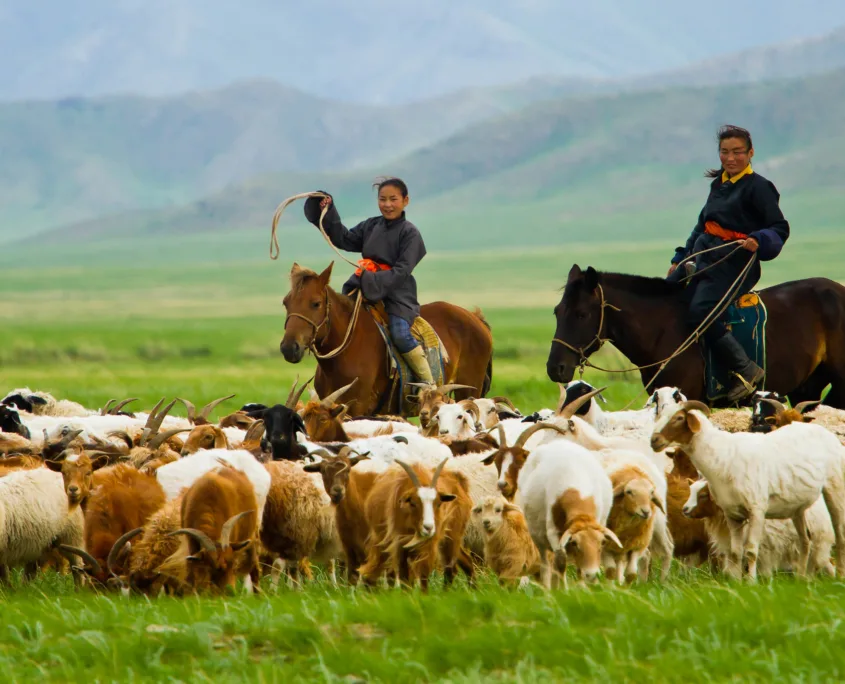
The ger isn’t just a shelter—it’s a symbol of Mongolian identity. Round, wooden-framed, and insulated with felt, the ger is designed to withstand everything from summer heat to winter snowstorms.
Inside, the layout is both spiritual and practical. The north side is reserved for guests and sacred objects, while the south side holds tools and kitchen supplies. The central stove is the heart of the home, where tea is always brewing.
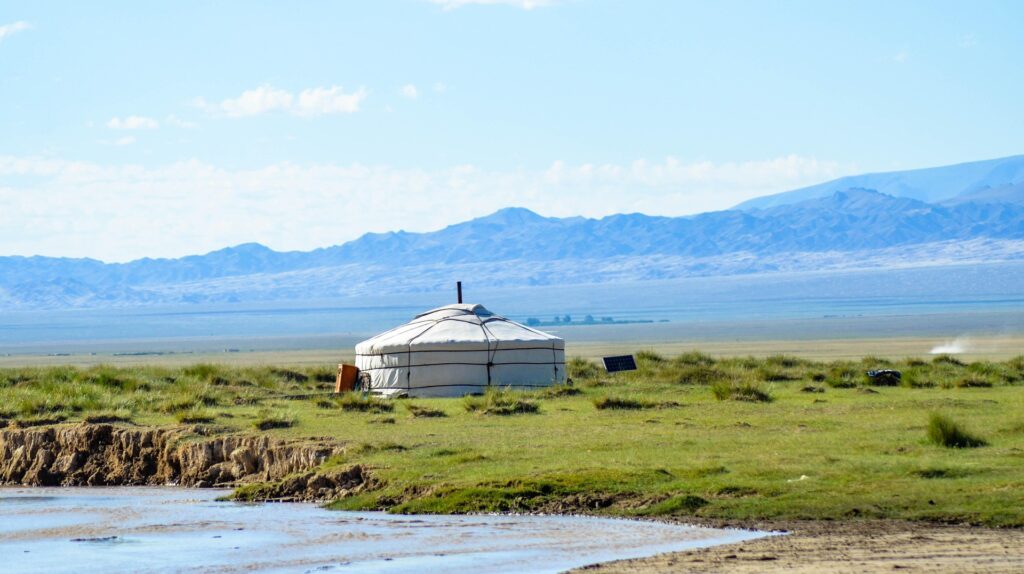
Mongolian nomads are famously hospitable. Visitors—especially travelers who arrive with a guide—are often welcomed with a bowl of suutei tsai (salty milk tea) and boortsog (fried dough). It’s a beautiful custom rooted in centuries of survival on the steppe, where sharing resources was vital.
You may also be invited to taste airag (fermented mare’s milk), offer or receive gifts, or even participate in daily chores like milking or cooking.
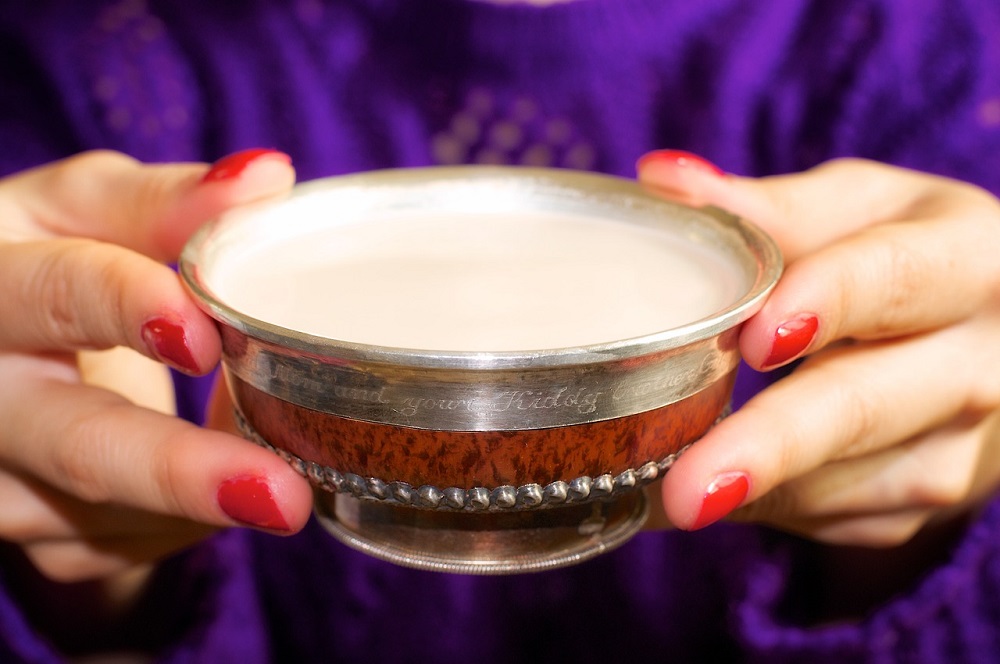
Nomadic Mongolians live in close harmony with nature. They honor ancestral traditions, Buddhist beliefs, and shamanic practices, blending old and new in daily life. Sacred ovoos (stone cairns) dot the landscape—places where people stop to offer thanks and seek protection during their journey.
This spiritual connection to the land is part of what makes their way of life so resilient—and so deeply moving to experience.
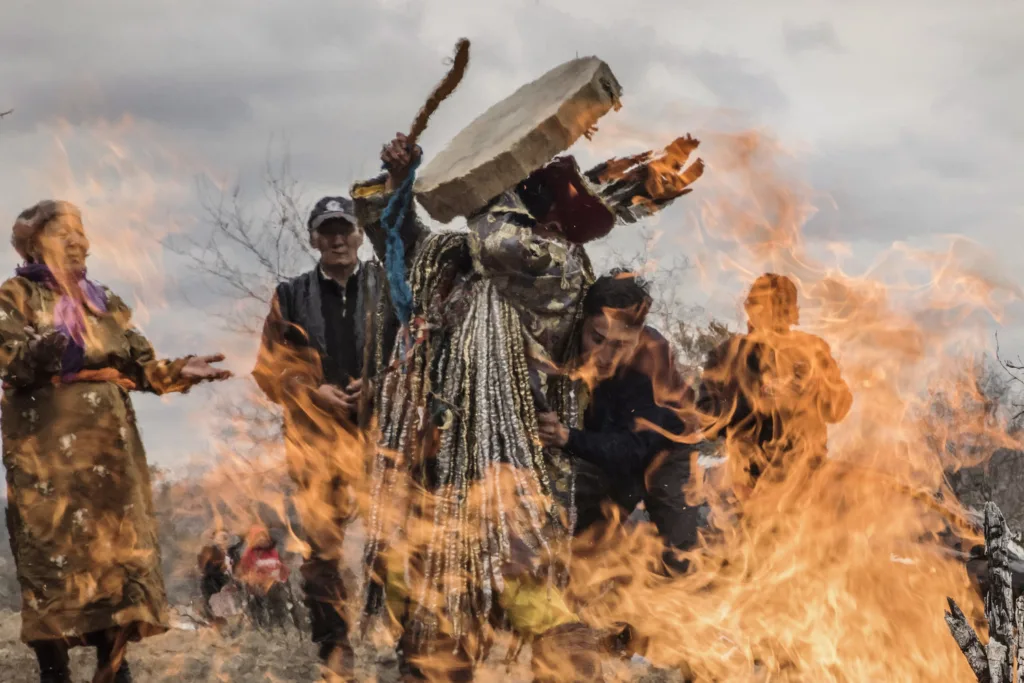
Modern life is slowly reaching the steppe. Solar panels, motorcycles, and mobile phones are now common, but the essence of nomadic life remains. Families continue to pass down knowledge and values through generations—resisting pressures to settle in cities or abandon their herding lifestyle.
By visiting respectfully and supporting ethical tourism, you help preserve these traditions.
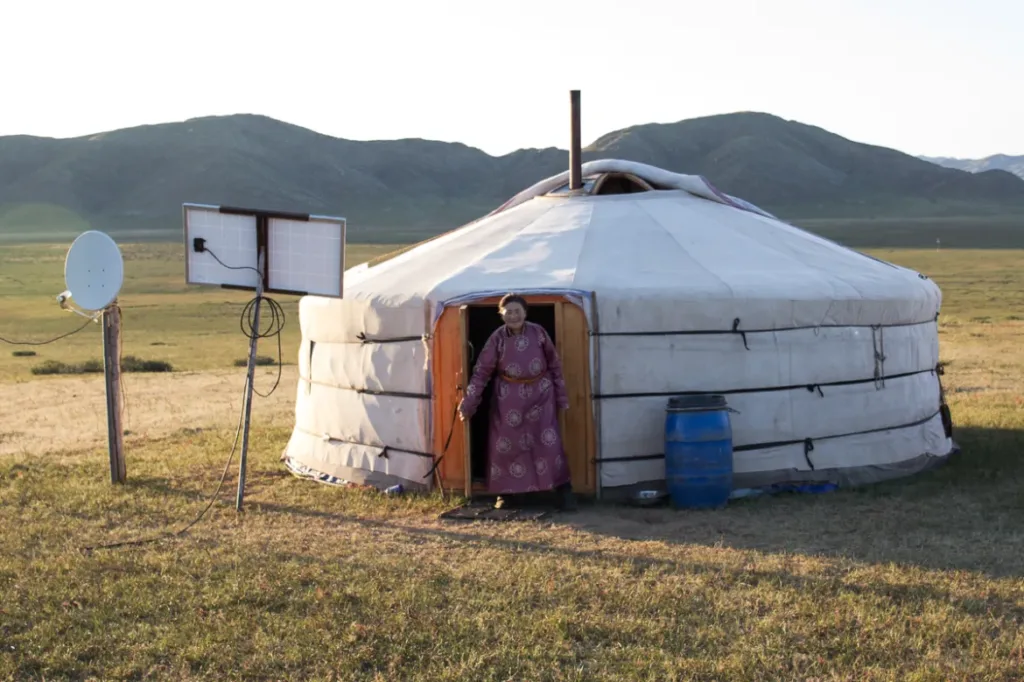
At Nomad Trail, we don’t just take you to see the countryside—we introduce you to the people who call it home. Our tours offer opportunities to stay in authentic ger camps, share meals with herding families, and witness the quiet strength of nomadic life.
This is more than travel. It’s connection, learning, and transformation.
